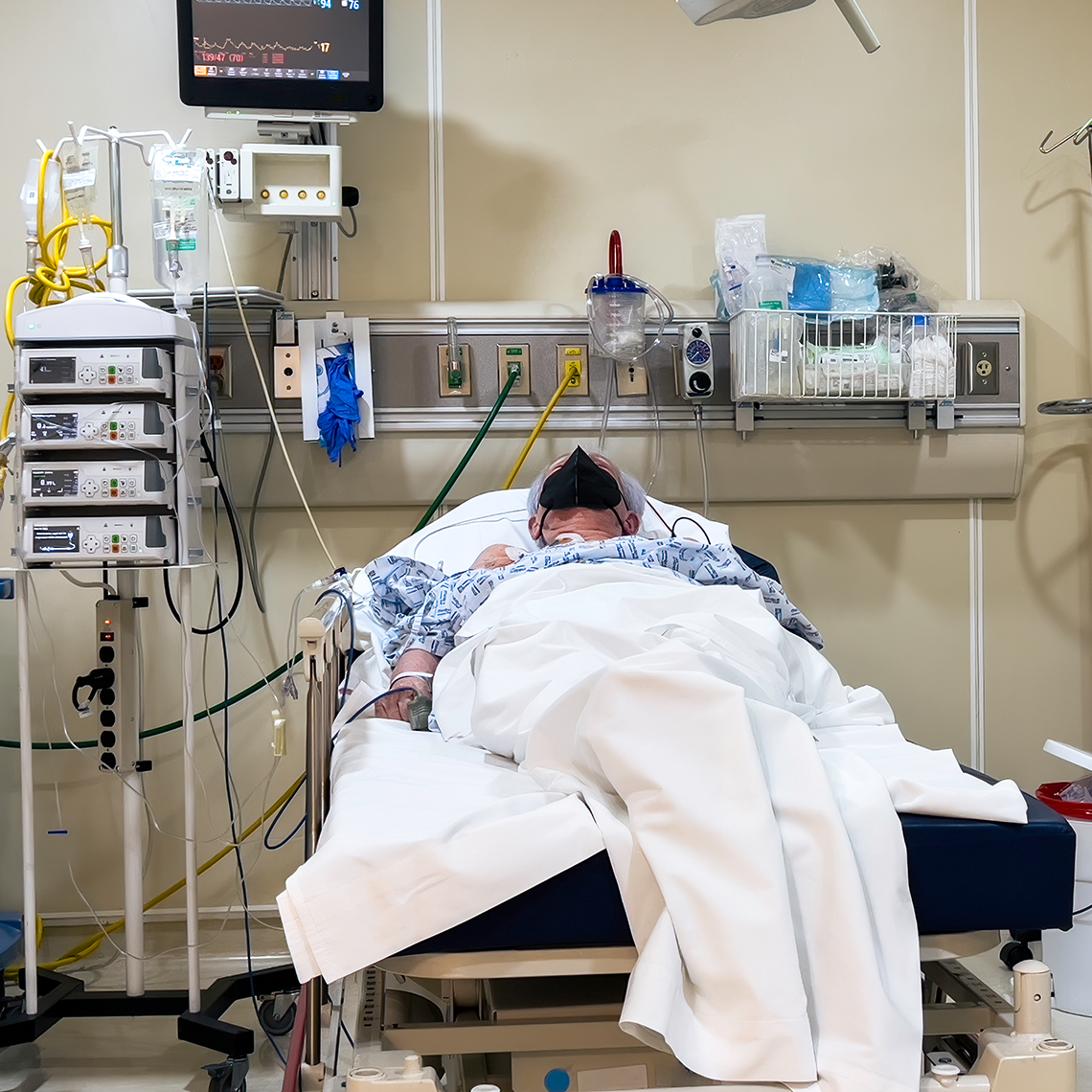Candello’s latest data analysis shows rising provider-to-patient communication breakdowns and a modest decline in provider-to-provider failures.
Case Study
Failed Physician-Nurse Communication

Description
A 48-year-old morbidly obese woman with sleep apnea, and on antibiotics for acute bronchitis, suffered a fatal cardiac arrest the morning after uncomplicated eye surgery.
Key Lessons
-
A patient’s overall health status should be taken into consideration when scheduling non-urgent surgeries.
-
Failure to make appropriate clinical provisions can lead to inadequate post-operative monitoring.
-
Reporting key information about a patient’s medical history from one provider to the next can guide important medical treatment decisions.
Clinical Sequence
A 48-year-old morbidly obese woman with diabetes and sleep apnea (treated with nightly nasal CPAP), required surgery for a detached retina. Two days before surgery, during her preoperative evaluation with a locum tenens physician in her PCP’s office, she reported a 3–4 day history of phlegm-producing cough and intermittent shortness of breath. Her EKG was within normal limits with no acute changes. The physician diagnosed her with acute bronchitis and prescribed antibiotics and a bronchodilator. He also sent the patient’s pre-operative report to her surgeon, and discussed all relevant findings. Because the patient’s procedure was scheduled as day surgery, the physician did not order post-op CPAP.
During the patient’s pre-operative interview, the anesthesiologist noted the patient’s acute bronchitis and sleep apnea. No respiratory assessment was documented.
Surgery was performed without complications. Given the patient’s history of sleep apnea and the late afternoon surgery, her daughter requested that the patient be admitted overnight for observation.
6:30 p.m. Stable, alert, and oriented, the patient was transferred to the floor. The floor nurse received the patient without a report or any mention of her sleep apnea.
7:00 p.m. Shift change
8:00 p.m. The patient—one of eight the incoming nurse was responsible for—complained of eye pain and was given Demerol (PO).
8:30 p.m. The patient vomited and the nurse assumed that the pain medication had been expelled. Despite a clear order to contact the physician for uncontrolled eye pain, the nurse administered an antiemetic and another dose of Demerol (IM) without notifying the physician.
9:30 p.m. The patient again complained of inadequate pain control. The nurse contacted the physician, who ordered a different antiemetic and pain medication. After receiving both medications and being encouraged to lie down, the patient appeared comfortable and began to fall asleep.
11:45 p.m. Upon checking the patient and finding her to be lethargic with cool, moist skin, the nurse called the lab to draw her blood sugar. While waiting, the nurse gave the patient a glass of orange juice. Her blood sugar was 278 and she seemed more alert.
12:45 a.m. The patient again appeared lethargic but arousable. The nurse, concerned for her patient, asked the charge nurse to assess her. He felt the pain medications had taken effect and the patient was sleeping comfortably; the physician was not contacted.
1:15 a.m. The nurse found the patient without a pulse or respirations and called a code. The patient was resuscitated, but upon transfer to an ICU at a neighboring hospital, she was declared dead.
Allegation
The patient’s daughter sued three anesthesiologists, the attending surgeon, the ophthalmology fellow, the nurse anesthetist, and the nurse caring for her the evening after her eye surgery, alleging negligence for performing a non-emergent surgical procedure in the presence of an acute respiratory infection and failing to note the patient’s sleep apnea, resulting in her death.
Disposition
After unfavorable expert reviews, the case was settled for more than $1 million, allocated evenly among two physicians and one nurse.
Analysis
Clinical Perspective
The physicians evaluating this patient did not consider postponing this non-urgent surgical procedure until her respiratory status had improved.
Potential risks to a patient’s overall health should warrant more consideration when scheduling non-urgent surgeries. Rescheduling may be inconvenient for the patient and the surgical team, but a decision to proceed against the risk of unnecessary harm has to be defensible.
The anesthesiologist failed to perform a key element of the pre-operative physical examination.
Failure to complete (and document) a pre-operative physical assessment, including cardiac and respiratory status, could be perceived as a gap in diligence and is a hindrance to defending an allegation of malpractice.
The orders written for this patient were too narrow to cover the realm of possible clinical needs of someone with a history of multiple health problems. Most critically, the postoperative orders did not adequately address monitoring the patient’s respiratory status.
Care plans should go with the patient across care sites and feature prominent clinical risk issues, in order to keep providers aware of complicating factors that increase risk to the patient. Multiple providers and disciplines must maintain awareness and ensure monitoring of serious clinical risks before, during, and after treatment. Electronic order entry and medical record systems with decision support tools that flag concerns and highlight significant aspects of a patient’s problem list (and also prompt recommended actions) offer promise—where available.
Risk Management Perspective
The nursing staff’s lack of awareness regarding critical aspects of this patient’s medical condition (e.g., history of sleep apnea, use of CPAP, and recent acute bronchitis) ultimately impeded the care she received.
Risk is reduced for a patient transferring from one location or service to another when a report noting key information about his or her medical history is provided to the receiving caregiver. Such information can guide decisions, e.g., the regulation of medications provided to the patient, rooming the patient closer to the nurses’ station (allowing for more frequent observation), or flagging the need for special care.
The patient’s casual admission for overnight post-op observation appears to have been subject to numerous (errant) assumptions. Her uncontrolled pain was not promptly reported to her physician and she received narcotics in excess of those originally ordered.
Casual admissions to holding facilities can be dangerous in the absence of specific notes/ orders regarding any pre-existing health conditions. Likewise, the nursing staff can minimize the risk of an adverse event by monitoring each patient through continual clinical assessment and reporting any deterioration in his or her condition. Failure to recognize the (sometimes subtle) significance of the physician’s orders (e.g., when to contact him or her) places patients at unnecessary risk for an adverse event.

See More MPL Cases
Medication Mix-up Contributes to Patient’s Death


Incidental Does Not Mean Insignificant

When Test Results Go Unspoken

